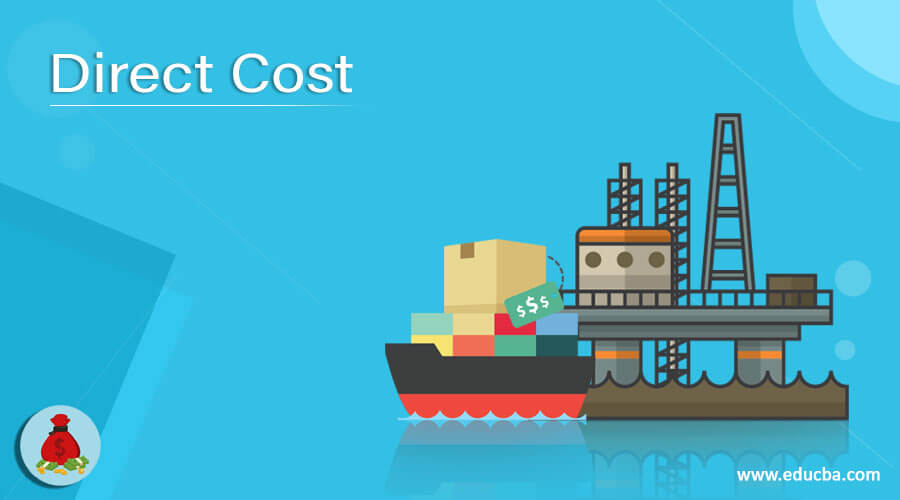Updated July 7, 2023
Definition of Direct Cost
Direct cost refers to costs attributable directly to core goods and services production. These costs can be economically identified to a cost object or incurred for a specific object. They include raw materials, direct labor, and other costs incurred solely for producing goods and services.
Explanation
Direct costs are expenses an organization incurred in producing goods or services sold to customers. These costs include raw materials, labor costs of factory workers involved in converting raw materials into finished products, and other expenses directly identifiable as production costs, such as power and fuel costs for operating factory machinery, freight charges, etc. However, advertising and office staff salaries are not considered direct costs because they are not directly linked to production. Direct costs are typically variable costs that change with the level of production. However, fixed costs like factory rent are also direct costs. Minimizing direct costs can help increase profits, and some strategies to do so include negotiating with vendors, purchasing raw materials in bulk to obtain discounts, and so on.
Example of Direct Cost
Suppose a company, Clothes Inc., is involved in garment production. The company incurs the following expenses in the year 2018-19:
|
Particulars |
Amount ($) |
| Raw fabric purchased for producing garments | 150,000 |
| Wages paid to factory staff | 60,000 |
| Cloth purchased for office use | 10,000 |
| Power & fuel for the factory | 3,000 |
| Rent for factory | 50,000 |
| Rent for an office building | 20,000 |
| Electricity expense for office | 4,000 |
| Printing & stationery purchased | 1,000 |
From the above transactions, one needs to calculate total direct costs.
Solution:
Calculation of total direct costs:
|
Particulars |
Amount ($) |
| Raw fabric purchased for producing garments | 150,000 |
| Wages paid to factory staff | 60,000 |
| Rent for factory | 50,000 |
| Power & fuel for the factory | 3,000 |
| Total Direct Cost | 263,000 |
Analysis of the above example:
- In the above question, wages paid to factory staff are given to the labor involved in the production of garments, while power and fuel are used to run machinery. Hence, wages, power, and fuel are part of direct costs.
- The fabric purchased for raw material production is only included in the direct costs, not the cloth amounting to $1,000, purchased explicitly for office use and not production purposes. Similarly, only the rent of a factory is included in the direct costs because it is directly related to production, but not the rent of an office building, which is included in the indirect costs.
- Even the office’s electricity, printing, and stationery expenses are incurred. Hence, they, too, do not come under direct costs.
Importance of Direct Cost
Any organization incurs direct costs, which are the most critical and essential to the core business operations. For example, purchasing wood is a direct cost for a furniture business and is necessary for the business’s existence. Direct costs are easily identifiable to specific cost objects, unlike indirect costs. Calculating the direct costs is essential in determining a business’s profitability and financial performance. Reducing direct costs can help increase profit, so business entities should minimize these costs.
Advantages
Some of the advantages are as follows:
- To calculate the gross profit (Sales – Cost of goods sold) of a business, the total direct cost is required, as it is part of the cost of goods sold subtracted from the total sales revenue to determine the amount of gross profit of the business.
- Direct costs are generally variable, increasing with increased production and vice versa. Therefore, these costs only incur when there is production and not when production stops.
- Direct costs are essential to carry out the necessary operations of a business, as they involve purchasing raw materials and other costs required to convert raw materials into finished goods. The sale of such finished goods is the primary source of earnings for the business.
Disadvantages
Some of the disadvantages are as follows:
- Some costs are not easily identifiable as direct costs, meaning they can have attributes of both direct and indirect costs. Bifurcating such costs into direct and indirect costs is time-consuming.
- In the service industry, an employee’s salary is a direct cost, but in the manufacturing industry, office staff’s salary is indirect. This concludes that direct costs depend on the nature of the business and are different for every company. Therefore, the accountant should be intelligent enough to categorize expenses as direct and indirect.
Conclusion
Direct costs refer to expenses directly attributed to a cost object, such as a specific product or service essential to a business. However, the same cost may be classified as direct for one industry and indirect for another. For example, purchasing furniture for a furniture trading company comes under direct costs. In contrast, purchasing furniture for a footwear trading company is an indirect expense. Therefore, it is important to carefully categorize expenses as direct or indirect, depending on the nature of the business.
Recommended Articles
Here are some further related articles for expanding understanding:




